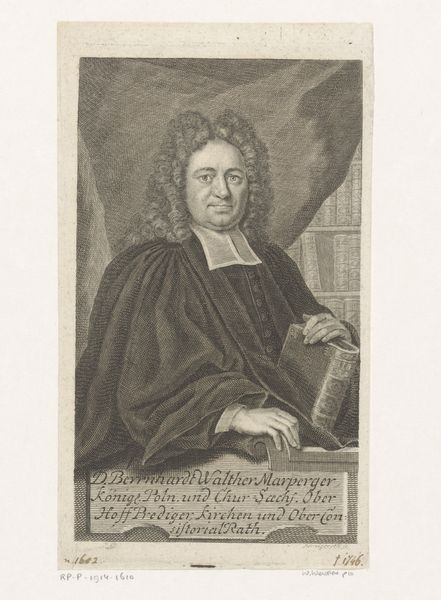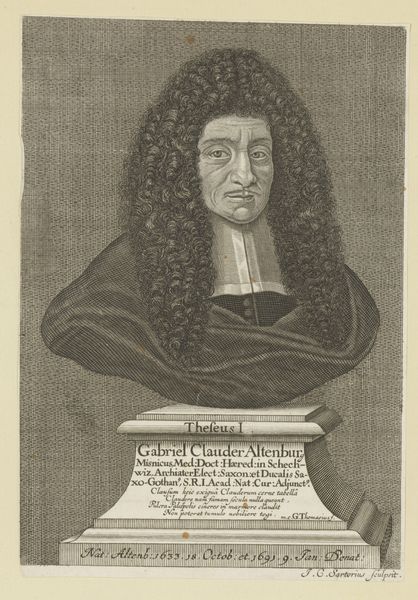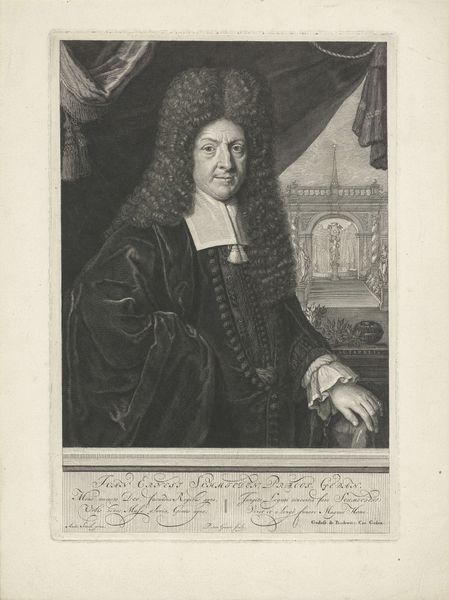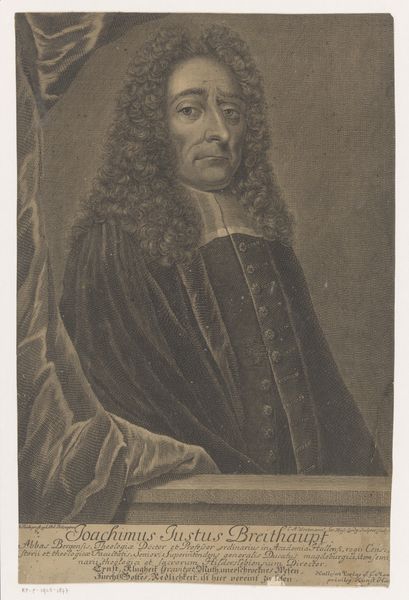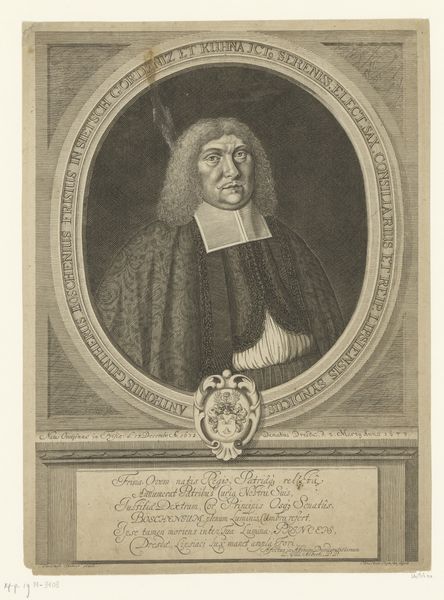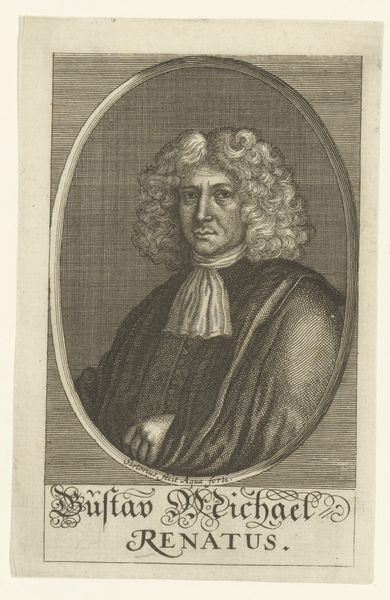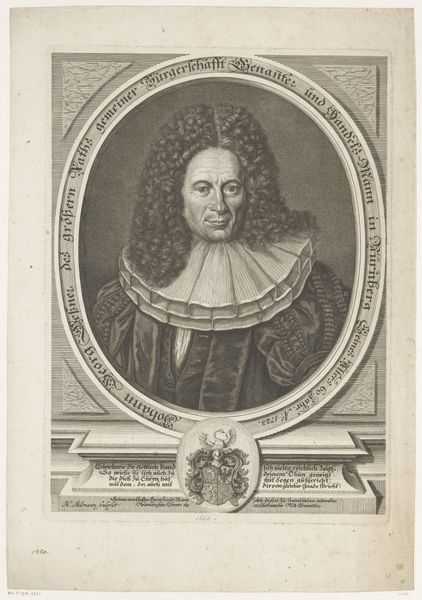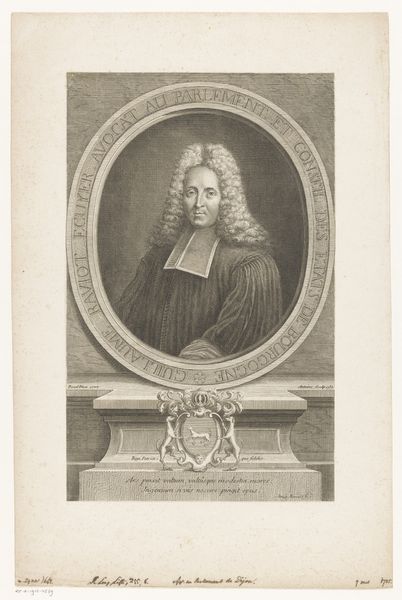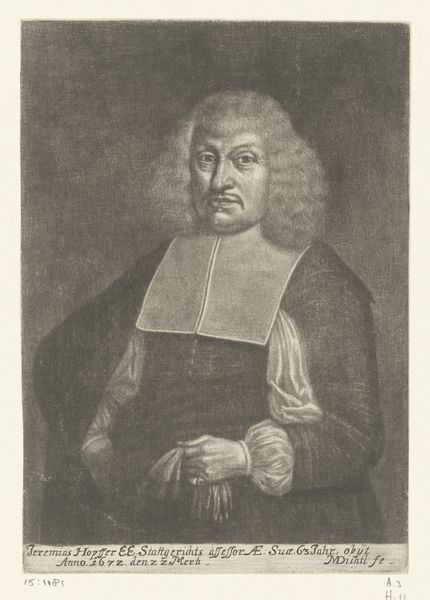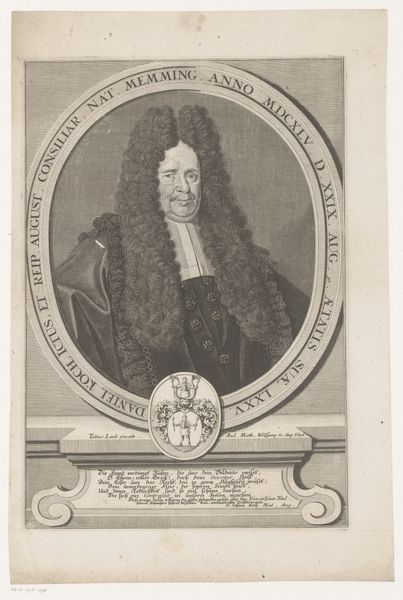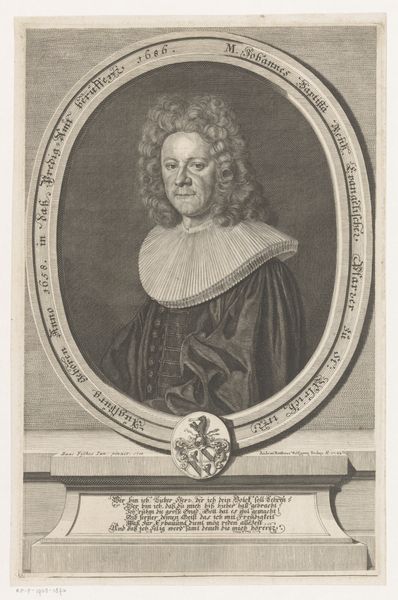
drawing, print, paper, engraving
#
portrait
#
drawing
#
baroque
# print
#
old engraving style
#
paper
#
pencil drawing
#
engraving
Dimensions: height 235 mm, width 184 mm
Copyright: Rijks Museum: Open Domain
Editor: This is "Portret van David Nerreter op 77-jarige leeftijd," or "Portrait of David Nerreter at the Age of 77," made in 1721 by Modestin Eccardt. It’s an engraving. The sitter appears so solemn, almost austere. I wonder what context to view this portrait. Curator: Absolutely, it's vital to understand the context. This image, beyond being a portrait, is a powerful representation of 18th-century societal structures and religious authority. Nerreter was a General Superintendent, meaning he wielded significant religious and political power. Editor: He looks like a serious person. Curator: And what do you make of the way he holds the book? The book is not merely a prop. Consider the literacy rates and the symbolic weight of religious texts in that era. The act of holding the book suggests access to knowledge and therefore power, reinforcing the social hierarchy. Editor: I didn’t consider that it might be reinforcing hierarchies. Curator: Precisely. And look closer at the engraving technique itself. Notice the detail in his robes and hair? The baroque style wasn’t simply decorative, it was used to communicate status. Do you see any challenges to this perceived power? Any sense of vulnerability? Editor: Maybe in his eyes? I am drawn to the expressiveness of the face. I see that he is a real person. Curator: Exactly! Portraits were rarely straightforward representations; they negotiated power, identity, and social messaging. The book, the robe, the title–everything coalesces into a very specific narrative about power and privilege in 1721. How might the historical understanding influence a contemporary audience and change people's views? Editor: I hadn’t really thought about engravings being used to reinforce societal hierarchies. Thanks for providing insight to understand this. Curator: My pleasure. It’s these dialogues that enable us to look critically and to continue finding significance in art, particularly through the passage of time.
Comments
No comments
Be the first to comment and join the conversation on the ultimate creative platform.
